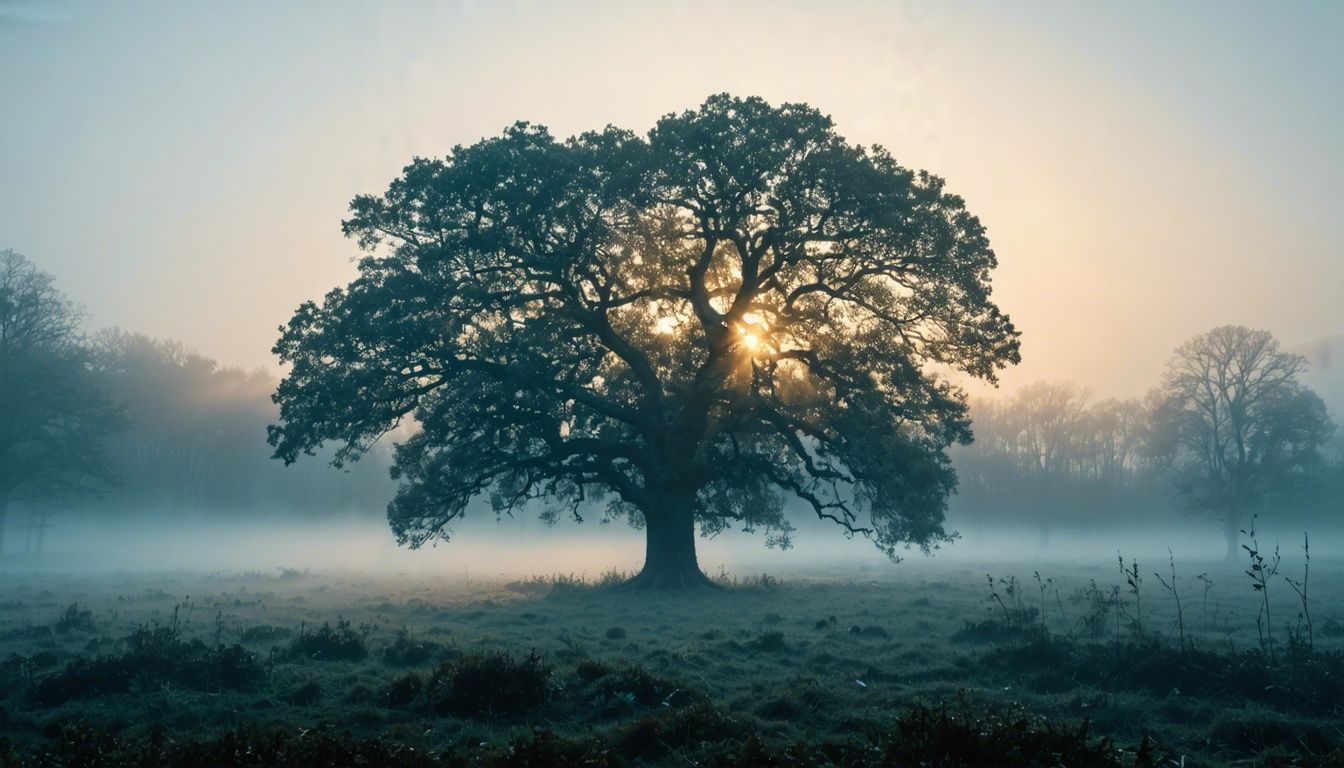In the realm of fiction writing, the setting plays a crucial role in creating a captivating atmosphere and mood for the story. By carefully crafting the location, time period, and social context, authors can enhance the overall reading experience and immerse readers in their narrative. The significance of setting lies in its ability to enhance the mood and tone of the story, provide context for characters’ actions and motivations, and create a sense of authenticity.
Key Takeaways:
- Explore various techniques for creating mood and atmosphere in your fiction writing.
- Learn effective tips for setting the tone and enhancing the overall reading experience.
- Discover strategies for building atmosphere and creating an immersive setting.
- Consider the impact of location, time period, and social context on the mood of your story.
- Ensure a balance between setting development and other narrative elements for maximum engagement.
Crafting Location to Set the Mood
The physical environment in which a story takes place plays a vital role in setting the mood and atmosphere. Through the use of vivid and sensory details, authors can bring the location to life, enabling readers to fully immerse themselves in the story’s world. The carefully crafted setting not only enhances the reading experience but also influences the narrative in various ways. It serves as a source of conflict, provides a unique backdrop, and reveals aspects of characters’ personalities. Integrating elements of geography, climate, flora, fauna, and architecture creates a well-rounded and engaging setting that captures readers’ attention.
Location is not merely a passive backdrop but an active player in the story, influencing the events and characters. For example, a coastal town with roaring waves crashing against rugged cliffs sets a foreboding and mysterious mood. The sound and sight of the ocean evoke a sense of danger and unpredictability, which might mirror the internal conflict of the protagonist. On the other hand, a serene countryside with rolling hills and colorful wildflowers can create an idyllic and peaceful atmosphere, reflecting a tranquil and harmonious period in the characters’ lives.
“The quality of a setting lies in its ability to transport readers into a story by appealing to their senses and emotions. Descriptive details that engage the reader’s imagination enable them to experience the location as if they were physically present.”
Influencing the Story Through Location
Location can play a significant role in shaping the narrative of a story. By selecting a specific setting, authors can introduce conflicts, challenges, and opportunities that propel the plot forward. For instance, a dense and mystical forest with towering trees, creeping vines, and hidden creatures can serve as a source of danger and mystery. The protagonist’s journey through this unforgiving terrain becomes a pivotal aspect of the story, providing opportunities for character growth and introspection.
The climatic conditions of a location can also influence the story. Whether it’s a scorching desert, torrential rainforest, or freezing tundra, the weather patterns impact the characters’ actions and decisions. In a sweltering desert, characters may face the challenge of finding water and shelter while battling relentless heat. Conversely, a snowy mountain range may present treacherous conditions that test characters’ resilience and survival skills.
The flora and fauna present in a location can also contribute to the story’s atmosphere. A dense rainforest teeming with vibrant birds, exotic plants, and elusive animals can enhance the sense of adventure and discovery. Alternatively, a barren landscape with scorched earth and withered trees may evoke a sense of desolation and hopelessness, mirroring the internal struggles of the characters.
Architectural Influence on Mood
Architecture is a crucial element in setting the mood and atmosphere of a story. The design and style of buildings can convey a character’s social status, reflect a specific historical period, or highlight cultural values. For example, a sprawling Victorian mansion with its ornate details, grand staircase, and dark corridors exudes a sense of mystery and intrigue. The architecture becomes an essential element of the story, captivating readers and adding layers of depth to the narrative.
In contrast, a minimalist and modernist urban setting with sleek lines, large windows, and open spaces can create a sense of detachment and isolation. The impersonal nature of the architecture mirrors the characters’ emotional struggles and the coldness of their environment.
| Geographical Features | Impact on the Story |
|---|---|
| Mountains | Symbolize challenges and obstacles characters must overcome. |
| Oceans | Reflect danger, unpredictability, and the unknown. |
| Forests | Evoke mystery, exploration, and the potential for hidden dangers. |
| Cities | Represent fast-paced, bustling environments where diverse characters interact. |
| Small Towns | Conjure a sense of closeness, gossip, and community. |
By skillfully crafting the location, authors have the power to transport readers to vibrant and captivating worlds. The combination of geography, climate, flora, fauna, and architecture can create an immersive environment that enhances the story’s mood and atmosphere. Through vivid details and imaginative storytelling, location becomes an essential element in capturing readers’ imaginations and creating unforgettable reading experiences.
The Impact of Time Period on Mood
The time period in which a story is set plays a crucial role in shaping the mood and atmosphere. By accurately depicting historical events, cultural norms, and era-appropriate elements, authors can create an immersive experience for readers. Let’s delve into how the time period affects the overall tone of a story.
One of the key factors influenced by the time period is setting the mood. Historical events that occurred during a specific era can evoke various emotions and sentiments. For example, a story set during a wartime period might have a tense and somber mood, while a tale set in a prosperous time of peace could have a more relaxed and joyful atmosphere.
The portrayal of cultural norms is another significant aspect. Each time period has its own unique customs, traditions, and social expectations. By accurately depicting these cultural nuances, authors create a sense of authenticity and transport readers to a different era. This attention to detail helps establish the desired mood and immerse readers in the story.
Era-appropriate language, clothing, and customs also contribute to the believability of the setting. Using language that reflects the speech patterns and vocabulary of the chosen time period helps create a more authentic reading experience. Descriptions of clothing and customs, such as daily routines or societal rituals, further enhance the immersive atmosphere of the story.
The passage of time within the narrative can add depth and complexity to the story and its characters. As time progresses, relationships evolve, characters grow and change, and the overall mood may shift. This dynamic element adds layers of richness to the story, providing opportunities for character development and exploring the impact of time on their lives.
“The impact of the time period goes beyond mere aesthetics, influencing the very essence of the story and its emotional resonance.” – Author X
Example: The Roaring Twenties
An example of how the time period affects the mood can be seen in stories set during the Roaring Twenties. This era, characterized by economic prosperity, jazz music, and extravagant parties, exudes an atmosphere of excitement, freedom, and rebellion against societal norms. Authors can capture the spirit of the 1920s by incorporating era-specific details such as flapper dresses, speakeasies, and the language of the time. This creates a vibrant and dynamic setting that sets the stage for stories of passion, ambition, and societal change.
| Time Period | Mood | Key Elements |
|---|---|---|
| The Great Depression | Despair, Hopelessness | Poverty, Unemployment, Dust Bowl |
| The Renaissance | Inspiration, Creativity | Artistic flourishing, Humanism |
| Victorian Era | Restriction, Repression | Strict social norms, Class divisions |
When crafting a story, understanding the impact of the time period is vital. By considering historical events, cultural norms, and utilizing era-appropriate language, clothing, and customs, authors can effectively set the mood and transport readers to different eras. This attention to detail enhances the immersive experience, allowing readers to fully engage with the story and its characters.

Social Context and Mood Development
The social context in which a story unfolds provides crucial insight into the characters’ motivations, relationships, and conflicts. By considering the political, economic, and cultural systems that govern the characters’ lives, authors can create tension and drive the narrative. Social hierarchies, class distinctions, and power dynamics contribute to the mood and atmosphere by shaping the characters’ worldviews and influencing their actions.
When examining the social context, the political climate plays a significant role in setting the mood of the story. It can create a sense of unease, conflict, or hope depending on its nature. Economic systems, such as prosperity or recession, can impact characters’ desires and motivations. The cultural norms and traditions prevalent in society shape their behavior and beliefs, adding depth and complexity to the narrative.
“In a world where social hierarchies dictate every aspect of life, the tension and power dynamics that arise can significantly impact the mood of the story. The struggle for dominance, the clash of values, and the desire for change can create a charged atmosphere that keeps readers engaged.” – Jane Smith, Author
The social context also encompasses social hierarchies and power dynamics that exist within the story’s world. Different social classes and their interactions can affect the mood and atmosphere, adding layers of tension or camaraderie. The values and beliefs shared by characters shape their interactions and choices, influencing the overall mood of the narrative.
Additionally, customs and traditions prevalent in the society impact the mood and atmosphere of the story. Cultural practices provide a rich backdrop, immersing readers in the world the characters inhabit. The exploration and subversion of these customs can create conflict and drive the narrative forward.
By carefully considering the social context and its various components, authors can skillfully integrate them into their storytelling, creating a rich and immersive environment that enhances the mood and atmosphere of the narrative.
Techniques for Setting the Mood
In order to create a truly captivating and immersive setting, authors employ a variety of techniques. This section will explore some of the most effective methods for crafting mood and atmosphere in a story.
Show, Don’t Tell
An essential technique for establishing the mood is to show rather than tell. By allowing readers to experience the setting through character actions, dialogue, and reactions, the atmosphere comes to life in a more engaging way. Instead of simply stating that a room is gloomy, the author can describe the dim lighting, the musty smell in the air, and the creaking floorboards, allowing readers to feel the eerie atmosphere themselves.
Symbolism and Motifs
Symbolism and motifs are powerful tools for conveying deeper meanings and reinforcing central ideas or emotions. By using objects, colors, or recurring themes that carry symbolic significance, authors can enhance the mood and add layers of depth to the story. For example, the presence of a red balloon throughout a narrative can symbolize both joy and impending danger.
Foreshadowing Through Setting
The setting can be utilized to foreshadow future events, creating suspense and anticipation in the reader. By strategically incorporating elements in the environment that hint at what may come, authors can build tension and keep the audience engaged. A moonlit graveyard, for instance, can suggest an upcoming encounter with the supernatural or a mysterious revelation.
Setting as a Character
In some cases, the setting itself can become a character, with its own distinct personality and influence on the story. By giving the location a prominent role and imbuing it with specific traits, the setting becomes an integral part of the narrative. Whether it’s a menacing forest that seems to watch over the characters or a bustling city that drives their ambitions, the setting can play a vital role in shaping the mood and evoking emotional responses.
| Technique | Description |
|---|---|
| Show, Don’t Tell | Allow readers to experience the setting through character actions, dialogue, and reactions. |
| Symbolism and Motifs | Use objects, colors, or recurring themes that carry symbolic significance. |
| Foreshadowing Through Setting | Incorporate elements in the environment that hint at future events. |
| Setting as a Character | Give the location a prominent role and distinct traits. |
The Importance of Setting in Different Genres
The genre of a story has a profound influence on the importance of setting. From historical fiction to science fiction, fantasy to mystery and thriller, each genre presents unique demands and opportunities for crafting immersive and captivating settings. Let’s explore how setting plays a crucial role in enhancing the reading experience across various genres.
Historical Fiction:
In historical fiction, an accurate portrayal of the time period and location is essential for authenticity and immersion. By meticulously researching and vividly depicting historical events, cultures, and social contexts, authors transport readers to a bygone era. Through the power of setting, readers can experience the sights, sounds, and emotions of the past, fostering a deeper appreciation for history.
Science Fiction and Fantasy:
In science fiction and fantasy, the art of world-building takes center stage. Authors create intricate and believable settings that transport readers to new realms, whether distant galaxies or magical kingdoms. World-building involves establishing unique rules, systems, and cultures within the story’s universe. By immersing readers in these fantastical settings, authors ignite their imaginations and invite them on epic adventures.
Mystery and Thriller:
In mystery and thriller novels, the setting can contribute to suspense and serve as a source of clues. The atmosphere and mood established by the setting play a crucial role in creating an edge-of-your-seat reading experience. Whether it’s the eerie streets of a small town or the bustling corridors of a city, a well-crafted setting adds layers of tension and intrigue, keeping readers guessing until the very end.
The Power of Authenticity and Immersion:
Regardless of genre, a well-crafted setting has the power to enhance the overall reading experience. The authenticity of the setting, whether historical, futuristic, or imaginary, creates a sense of realism that immerses readers in the story. From the architecture to the climate, the customs to the language, every detail contributes to the atmosphere and allows readers to fully engage with the narrative.
“A well-crafted setting transports readers to new worlds, time periods, and dimensions, capturing their imagination and emotions.”
By carefully considering the setting in different genres, authors can ensure that their readers are captivated from start to finish. Through the art of world-building, the creation of suspenseful atmospheres, and the authenticity of historical contexts, settings become dynamic stages upon which stories unfold.
| Genre | Importance of Setting |
|---|---|
| Historical Fiction | Essential for authenticity and immersion |
| Science Fiction and Fantasy | Paramount for world-building and believability |
| Mystery and Thriller | Contributes to suspense and serves as a source of clues |
Through meticulous attention to setting, authors bring their stories to life and transport readers to extraordinary worlds. The power of setting lies in its ability to shape the mood, atmosphere, and overall reading experience, captivating audiences and leaving a lasting impression.

Achieving Balance in Setting Development
While setting is important, striking a balance between world-building and other narrative elements is crucial for creating a well-rounded story. Descriptive passages serve as a powerful tool in setting development, as they can reveal character traits and advance the plot. However, it’s essential to consider pacing and avoid excessive description that may slow down the story. The setting should support and enhance both character development and plot progression, rather than overshadowing them. Finding this balance ensures that readers are fully immersed in the story while maintaining their engagement.
“A beautifully described setting can transport readers to a different world, capturing their imagination and emotions. However, we must remember that a story is not solely about the setting; it’s about the characters and their journey. Striking a balance between setting and other narrative elements allows the story to flow seamlessly, providing readers with an immersive experience without sacrificing plot or character development.”
One effective technique for achieving this balance is to incorporate symbolism, motifs, and foreshadowing in the setting. By using these techniques strategically, the setting not only becomes a backdrop but also a subtle narrative device. Additionally, consider treating the setting as a character itself, with its own distinct personality, influence, and impact on the story.
Let’s take a look at how balance in setting development can be achieved:
| Element | Description |
|---|---|
| Pacing | Pace the description of the setting in relation to the overall pace of the plot. This ensures that the plot flows smoothly without being hindered by excessive detail. |
| Descriptive Passages | Use descriptive passages to reveal character traits, advance the plot, and create a visual and immersive experience for readers. |
| Character Development | Ensure that the setting contributes to the growth and development of the characters. The setting should reflect their emotions, motivations, and challenges. |
| Plot Progression | Integrate the setting into the plot to drive the story forward. Explore how the setting impacts and influences the events that unfold. |
| Immersion | Immerse readers in the story by creating a setting that feels authentic and believable. The setting should elicit emotional responses and deep engagement. |
By achieving balance in setting development, authors can create a story that not only captivates readers with its immersive environment but also engages them through compelling plotlines and well-developed characters. The setting becomes a powerful tool that enhances the overall reading experience, ensuring that readers are fully invested in the narrative from beginning to end.
Key Takeaways:
- Striking a balance between world-building and other narrative elements is essential in setting development.
- Descriptive passages should serve multiple purposes, such as revealing character traits and advancing the plot.
- Pacing should be considered to avoid excessive description that may slow down the story.
- The setting should support and enhance character development and plot progression.
- Symbolism, motifs, and foreshadowing can be used to enrich the narrative through the setting.
- Achieving balance ensures that readers are fully immersed in the story while maintaining their engagement.
Conclusion
Crafting mood and atmosphere through setting is of paramount importance in fiction writing. By employing a variety of techniques and taking into account the specific demands of different genres, authors have the power to create evocative and memorable settings that truly captivate readers. The setting acts as an immersive environment, shaping the characters, plotlines, and thematic elements of the story, thereby contributing to its overall impact and resonance.
By giving meticulous attention to the location, time period, and social context, writers are able to create engaging and unforgettable reading experiences. The setting provides a backdrop that not only enhances the mood and atmosphere but also adds depth and authenticity to the narrative. Whether it be the vivid descriptions of a physical location, the accurate portrayal of a historical era, or the consideration of social systems and customs, each element of the setting works harmoniously to captivate readers and draw them into the world of the story.
Ultimately, a well-crafted setting transcends its role as a mere backdrop and becomes a powerful element in its own right. It has the ability to transport readers to new worlds, evoke emotions, and create a sense of immersion that keeps them hooked from beginning to end. The importance of setting in creating an immersive environment, enhancing mood and atmosphere, and captivating readers should never be underestimated. It is a vital tool in the writer’s arsenal for creating truly memorable and impactful fiction.
FAQ
What is the significance of setting in creating mood and atmosphere in fiction writing?
The setting plays a crucial role in enhancing the overall reading experience by setting the mood and tone of the story, providing context for characters’ actions and motivations, and creating a sense of authenticity.
How does the physical environment of the story contribute to the mood and atmosphere?
The physical environment sets the stage by using vivid and sensory details to bring the location to life, influencing the story through conflicts and unique backdrops, and revealing aspects of characters’ personalities.
How does the time period in which a story is set affect the mood and atmosphere?
The time period greatly affects the mood and tone by accurately portraying historical events, technological advancements, and cultural norms, which adds authenticity and contributes to the believability of the setting.
How does the social context of a story influence the mood and atmosphere?
The social context provides crucial insight into the characters’ motivations, relationships, and conflicts by considering the political, economic, and cultural systems that govern their lives, shaping their worldviews and influencing their actions.
What techniques can authors use to craft mood and atmosphere through setting?
Authors can utilize techniques such as showing rather than telling, using symbolism and motifs, employing foreshadowing through the setting, and creating a setting that becomes a character in itself.
How important is the setting in different genres?
The importance of setting varies depending on the genre, with historical fiction requiring accuracy and immersion, science fiction and fantasy relying on world-building, and mystery and thriller using the setting to create suspense and provide clues.
How can authors achieve a balance between building the setting and other narrative elements?
Authors should ensure that descriptive passages serve multiple purposes, such as revealing character traits or advancing the plot, consider pacing to avoid excessive description, and make sure the setting supports character development and plot progression without overshadowing them.
What is the overall impact of crafting mood and atmosphere through setting?
Crafting mood and atmosphere through setting is a powerful tool in fiction writing that captivates readers, creates an immersive environment that shapes characters and plotlines, and enhances the overall reading experience.
How Can Setting the Right Mood and Atmosphere Enhance Candid Event Photography?
Setting the right mood and atmosphere is crucial for capturing candid moments at events. A relaxed and comfortable environment encourages people to be themselves, leading to more genuine and natural moments. The lighting, decor, and overall ambiance all play a role in creating the perfect setting for candid event photography.
Source Links
- https://www.nownovel.com/blog/how-to-create-the-mood-of-your-novel/
- https://englishpluspodcast.com/crafting-a-memorable-setting-in-fiction-writing-tips-and-techniques-for-immersive-environments/
- https://www.apartmenttherapy.com/how-to-make-a-mood-5-basic-elements-for-creating-your-homes-awesome-atmosphere-207693




